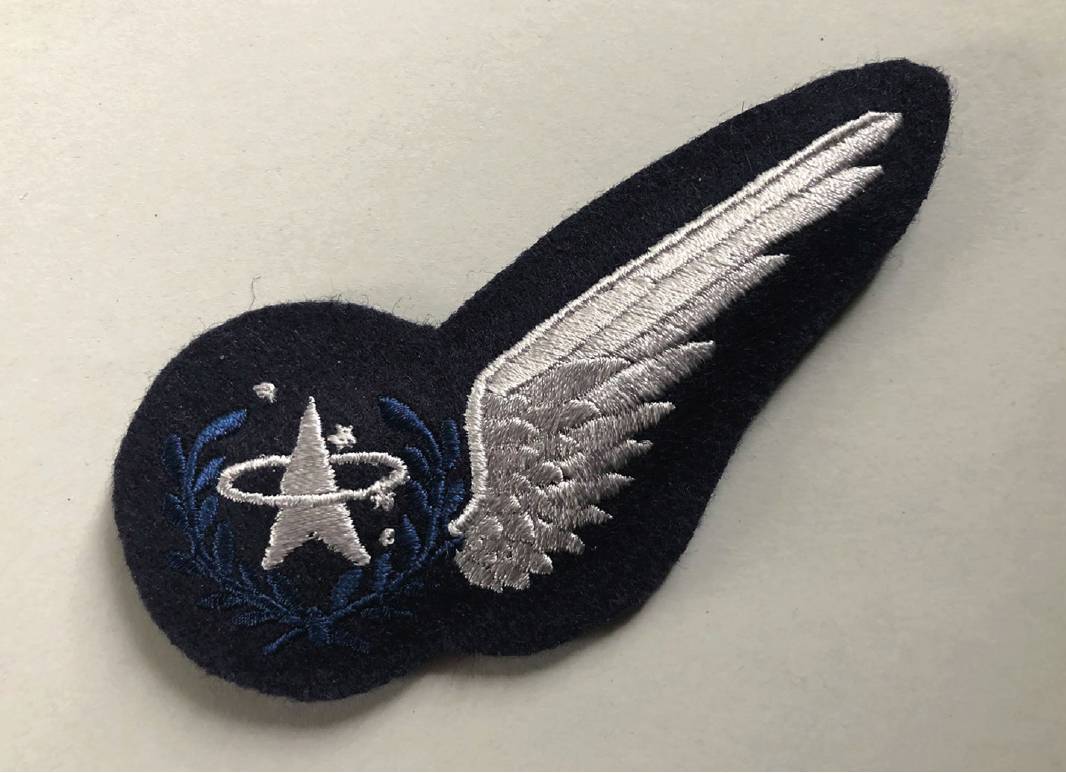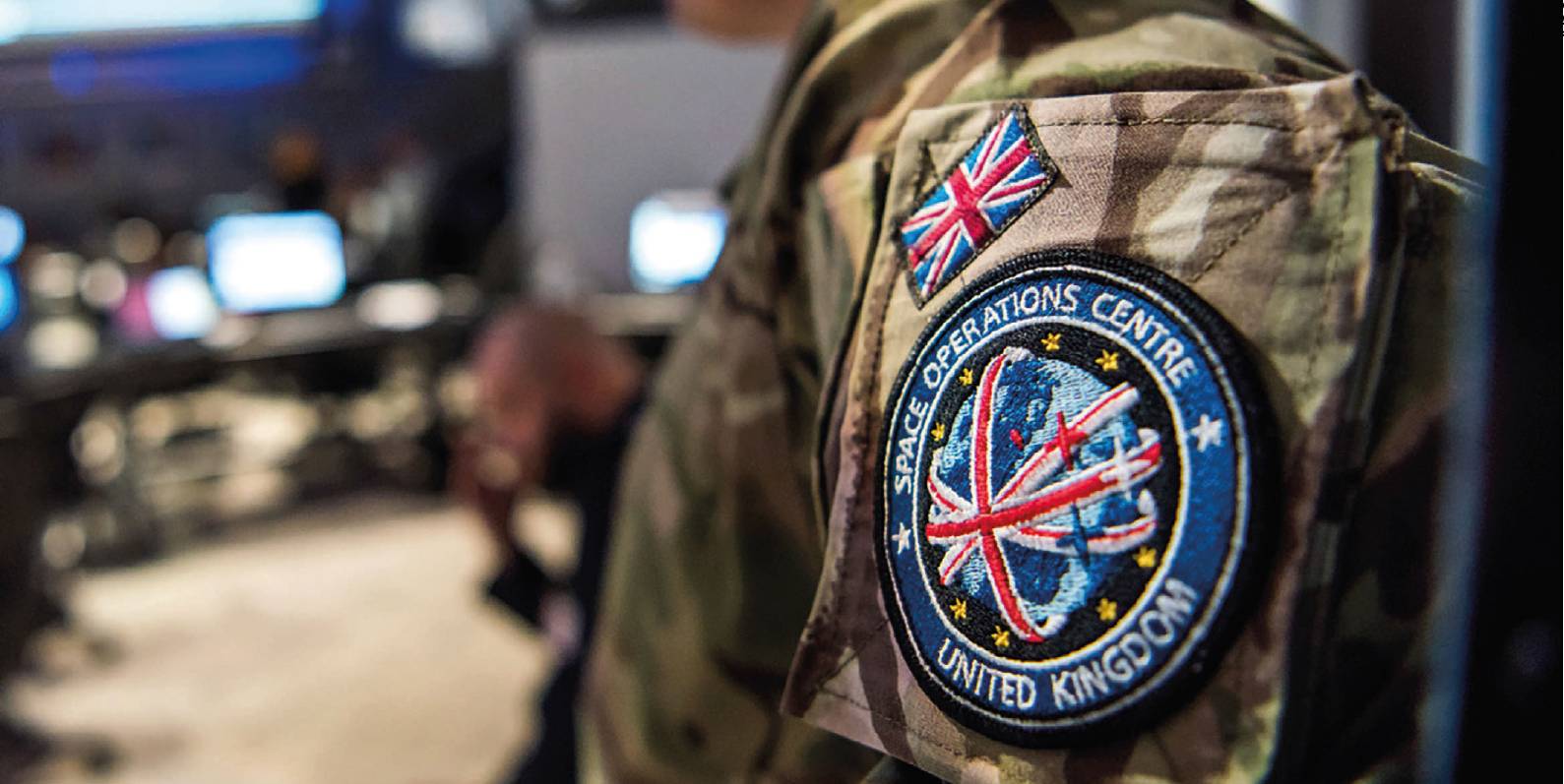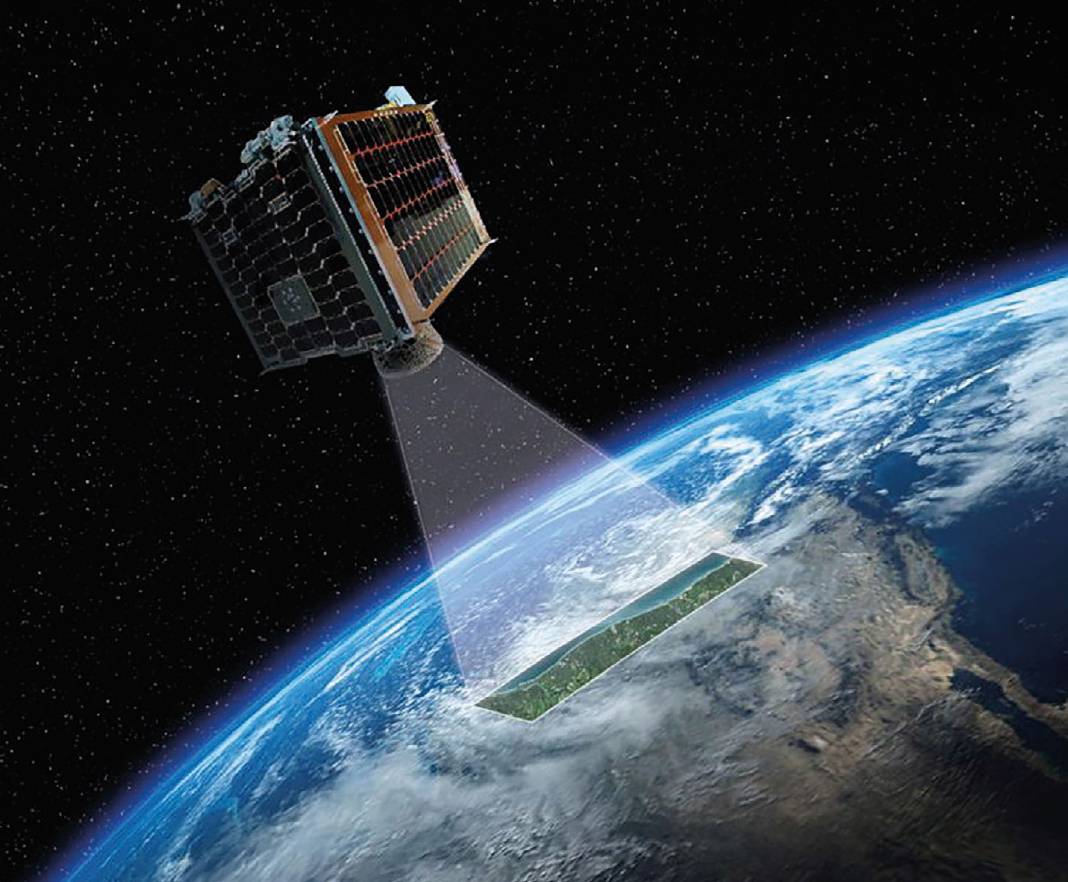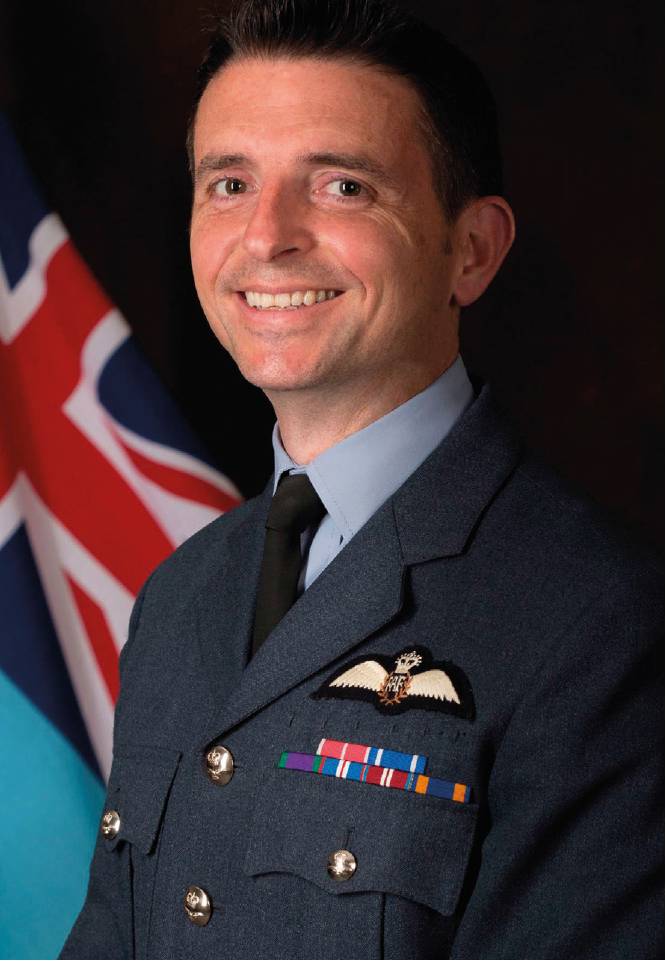AEROSPACE: What is Space Command? How did it come about?
 In 2021, the RAF announced the creation of new ‘space operators’ wings. Crown Copyright
In 2021, the RAF announced the creation of new ‘space operators’ wings. Crown Copyright
PG: We currently have around about 300 personnel, most of whom are based at Fylingdales or in the SpOC with the headquarters itself still building in terms of workforce. We are recruiting people from all three services and the civil service and will expand this to work with academia and industry. In terms of capability development, the potential is huge and we took on an amazing space capability team that had been working for AVM Linc Taylor in Air Command. They’ve now transferred to the UK Space Command and we’re looking to expand the team whilst ensuring we have the right people with the right skills. The first stage be to undertake a training needs analysis where we will work out what skills and education are required across defence and wider government. This will be done in close cooperation with the civilian space sector, to ensure we can support each other rather than duplicate efforts. As I have mentioned, collaboration is key, and we will focus on this area with our allies too. What we will also need is flexibility, that is well understood in air and I know will be one of the keys to effective space power and will allow us to shape the command as we grow.
AEROSPACE: Where does Space Command sit in the chain of command? Does it come under the RAF?
PG: We are a joint command working as the defence focal point for space operations, training and capability as I mentioned. The command will, therefore, need to be representative of defence in its workforce and outlook. Historically the Royal Air Force had been defence’s lead on space operations and so that is where most of the current experience is. There’ll be a high proportion of RAF to Army and Navy to begin with but I would like to see this even out over the coming years as we build the space expertise across defence. We sit under the RAF and the Chief of the Air Staff has supported the commands establishment, no small feat in the current climate of constrained movements due to COVID. I currently work very closely with Air Vice-Marshal Ian Duguid, Air Officer Commanding 11 Group as they are the RAF’s multi-domain operations group. We are working with them to ensure we develop and enhance their work around Space and how it supports the other domains. It is very much led by the RAF at the moment, but that will change over the years as we evolve our direction, understand what our structures are going to look like, and understand more how space affects our day-to-day operations.
AEROSPACE: What do the day-to-day operations of Space Command involve? Presumably satcom and space surveillance?
PG: You’ve hit the nail on the head, but in order to do that we need to understand the environment we will be operating in. It is the same as any environment defence wishes us to operate in, to be effective we must understand what is going on.
ULTIMATELY WE NEED TO WORK WITH ALLIES AND PARTNERS, UNDERSTAND WHERE THERE ARE ANY CAPABILITY GAPS, AND FOCUS OUR CAPABILITY DEVELOPMENT IN THOSE GAPS
You can imagine the first time you put troops on the ground in country X. You are going to look at the terrain through maps, images and try to understand the lay of the land, the threats and so on. You’ll want to see the adversary before they see you, this gives you the tactical and, in some cases, the operational or strategic edge. Understanding the space domain is the number one priority for the command and that is very much what Fylingdales and the SpOC do. Once we understand it, then we can look to ultimately protect and defend the UK and allies’ interest in space. It is important to remember space continually evolves, both naturally and with human intervention and so requires constant interaction. You saw AVM Harv Smyth, last year, highlighting possible nefarious activity in space, but you can’t do that unless you have the sensors and trained people to understand it. That’s space as an operational domain.
A task ahead of us is taking on Satellite Communications from UK Strategic Command. This means we will be taking over the day to day operations of the Skynet satellites, and the way we do that is going to change over the coming years. It is currently done by Airbus as a Private Finance Initiative, but we’ll take on more and more responsibility for that in the future. But I return to my original point, the biggest thing is understanding what’s going on up there, so called space domain awareness. This isn’t new to defence and is exactly the same in the other domains. I have recently come from the Combined Air and Operating Centre (CAOC) in Qatar where Air domain awareness was the primary mission before we did anything else. It’s the same for space, to enable us freedom of action to do what we need to do in terms of military operations around the globe.
AEROSPACE: Are you at the stage where you can run space ‘Red Flag’ style exercises?
PG: At the moment, we are not looking to organise large-scale space ‘Red Flag’ exercises. We do participate in those exercises with various partners and allies, as I mentioned before we are seeking to minimise duplication unless there is a clear national need. The US runs some hugely impressive exercises and wargames and we will continue to participate in them. Importantly we will constantly assess the training to ensure it is delivering the very best to personnel in the commands that require it. We will continue to build space as a more active component of defence’s exercises. You’ll see this in exercises like Cobra Warrior or other large-scale exercises hosted by formations like the Allied Rapid Reaction Corps (ARRC). We will look to play down at the tactical level via denial of GPS, and all the way to strategic with the denial of SATCOM and will test defences backups for providing command and control. As an example, we’ve got a war ame this month we’re sitting down and talking through several scenarios to do with UK operations. Unsurprisingly, given my last job, the first people I spoke to were the Carrier Strike Group’s commander and various deputies for the upcoming Carrier Strike Group 21 (CSG21) deployment. What, in training terms, do we need to do for them to be ready when they actually deploy? It is understanding the space environment, and understanding if there are any issues, especially when you’re on a ship. The Royal Navy understand how important assured communications are and we will, with UK Strategic Command, support them in providing this service.
 USAF
USAF
AEROSPACE: So the CSG21 will have a ‘space liasion officer’ onboard?
PG: Yes it will. It is no different to everything we do in any of the other domains where we supply Liaison Officers to partner commands or flanking units. In the CAOC, we had a significant number of liaison officers from across the domains and had reciprocal CAOC air representatives out in the other domains. This is to ensure that you’ve got an expert and translator talking about air to those who may not have as deeper understanding of that domain. We see that as key in the future. HMS Queen Elizabeth will have access to UK Space Command when she deploys, and we will ensure the commander has what they need to make the right decisions. I think that cross-liaison is key as we look to get into full multi-domain operations.
AEROSPACE: What UK space industry capabilities have impressed you so far in developing UK space power?
PG: One of the best things I’ve done so far was the visit to the Space Cluster at Harwell, which has around 105 different companies and 1,000 people doing really impressive work. In the six hours that I was there, I saw so many different and amazing small companies doing different, ground-breaking work. Whether it’s building antennas for spacecraft or people working in the electromagnetic spectrum, the teams there are truly impressive. I think in the UK, the breadth and innovative expertise that we have is second to none. How do you harness all of that? The National Space Strategy and the Defence Space Strategy will give a framework of where we are going and how people can support our efforts. As I have already mentioned the command will work increasingly closely with the civilian sector to push forward. We see the use of forums being the main conduit that will enable us to get the smallest space start-up and the largest primes in a room and shape where we are going together and in a collaborative manner. I think the thing that’s most impressed me, is the breadth of the space industry in the UK which I had no idea about before I came into this job. It is what makes it so exciting.
AEROSPACE: You have also mentioned the potential of tapping into amateur astronomers as a space ‘Home Guard’ or perhaps more appropriately an ‘Orbital Observers Corps’?
PG: As I have already mentioned, our primary mission is understanding the space domain. I had a friend who lived close to me in Lincolnshire about 10 years ago. He was one of those guys with a surprisingly large telescope pointing up at the universe in his back garden that I mentioned in the FASI webinar the other week. This made me think, how do we draw on the lessons and skills of these people? They may have a level of expertise that would take us years to build. It is a tongue-in-cheek line, but there is a seriousness to my point; how do we harness that ability, because I guarantee, if you manage to do that in the UK right now, you would have a significant base of expertise.
AEROSPACE: What are the UK’s strengths as an emerging space power? What can the UK offer to allies like the US that already have huge capabilities in spy satellites?
 The RAF’s Carbonite-2 satellite, launched through the Rapid Capabilities Office. Crown Copyright
The RAF’s Carbonite-2 satellite, launched through the Rapid Capabilities Office. Crown Copyright
PG: I don’t think, in any way, shape or form, we could replicate the network that the Americans, the Russians or the Chinese have in terms of military-use networks of ISR satellites. But I don’t think we need to, because there will be a sweet spot in terms of what commercial partners could provide and what we can develop in defence and dual-use of various satellite capabilities by both the civil and military sectors. Earth observation in terms of climate change, is enormously important today in terms of taking measurements, whether it is sea levels, emissions, weather, or other areas. It’s exactly the same technology as getting eyes in the sky, if you like, over the top of a point of interest on earth for a military application. Ultimately we need to work with allies and partners, understand where there are any capability gaps, and focus our capability development in those gaps. But at the same time, working with a whole range of other partners in the UK to determine if there’s a gap nationally and if we can make it dual use. I think we can be really clever about this, rather than just try and replicate what others have done for the last 50, 60, or 70 years.
 Air Vice-Marshal Paul Godfrey. Crown Copyright
Air Vice-Marshal Paul Godfrey. Crown Copyright

